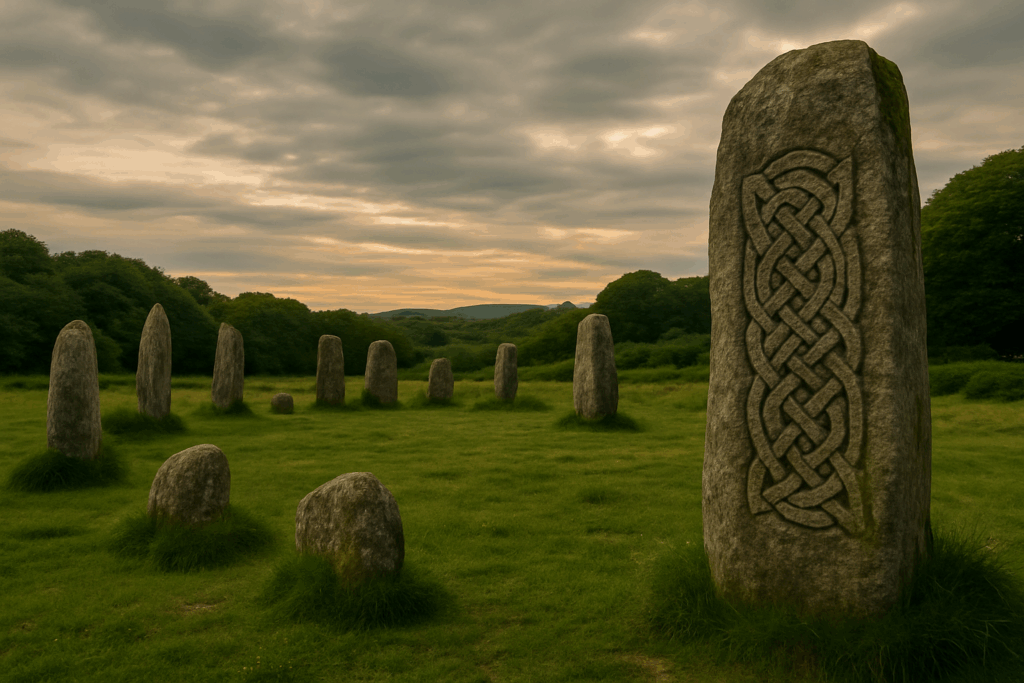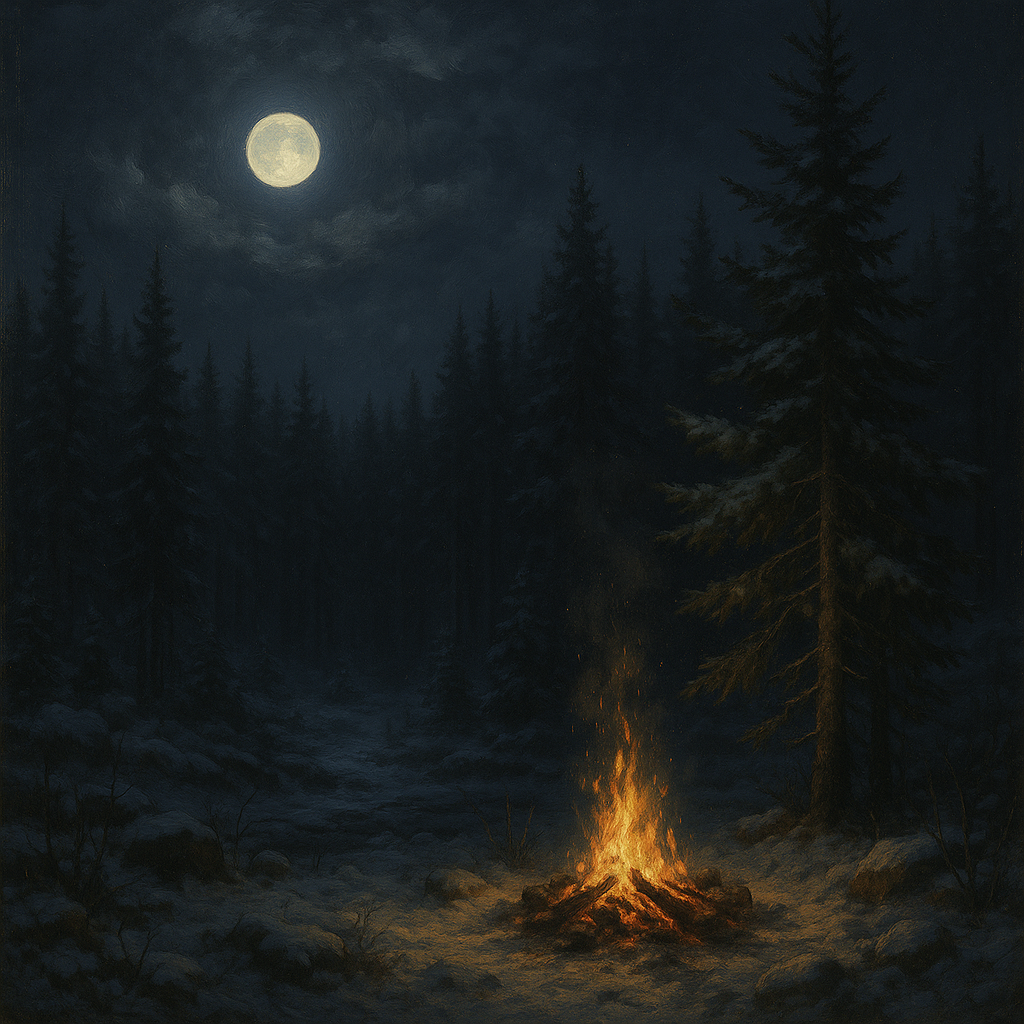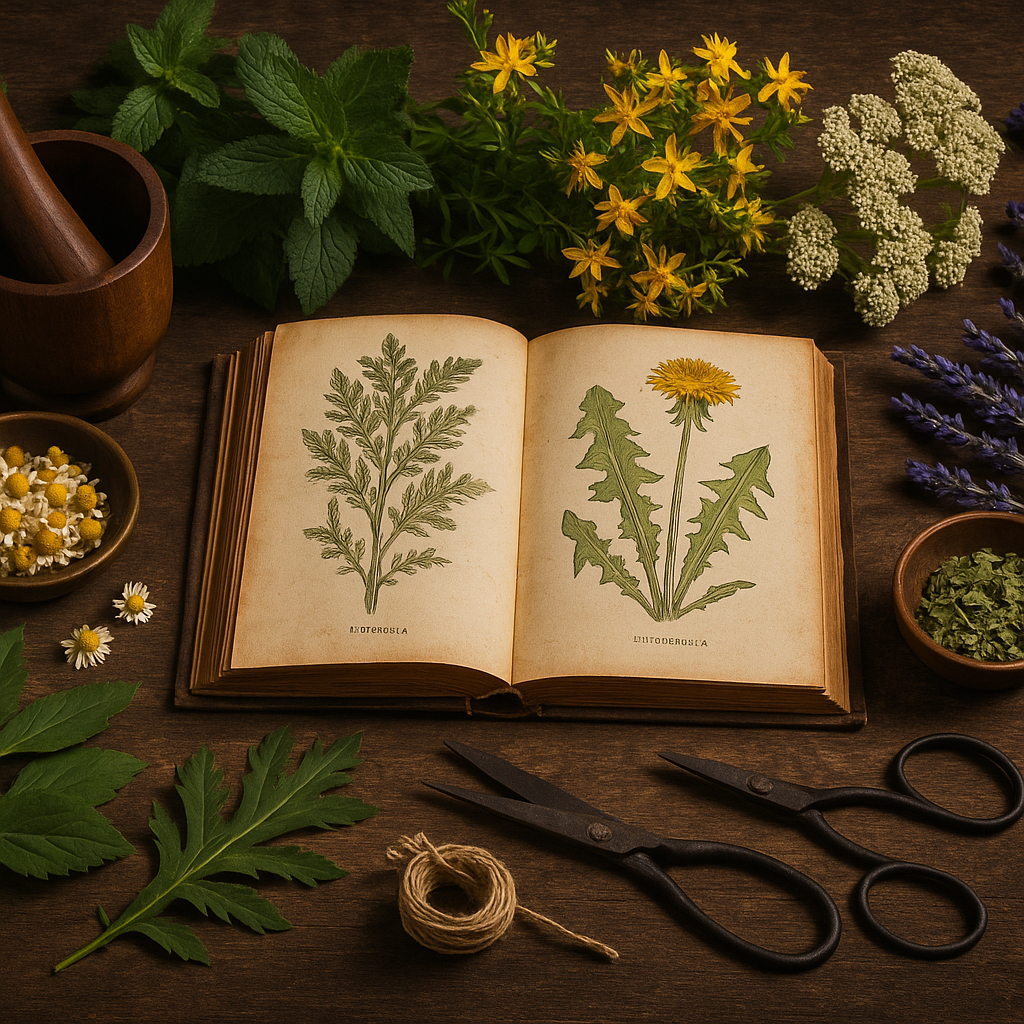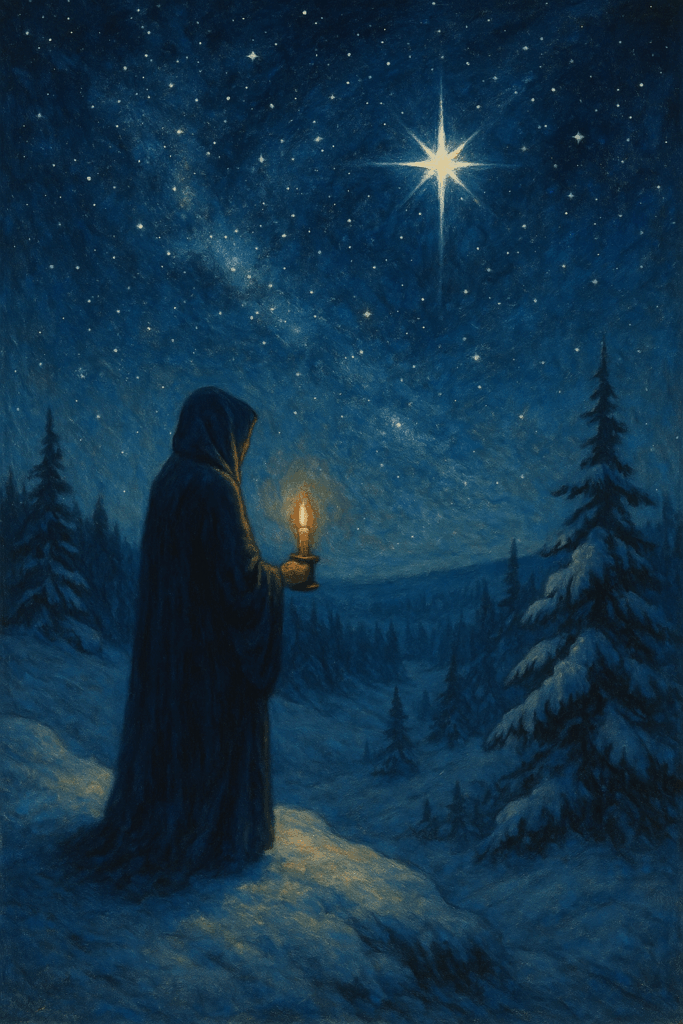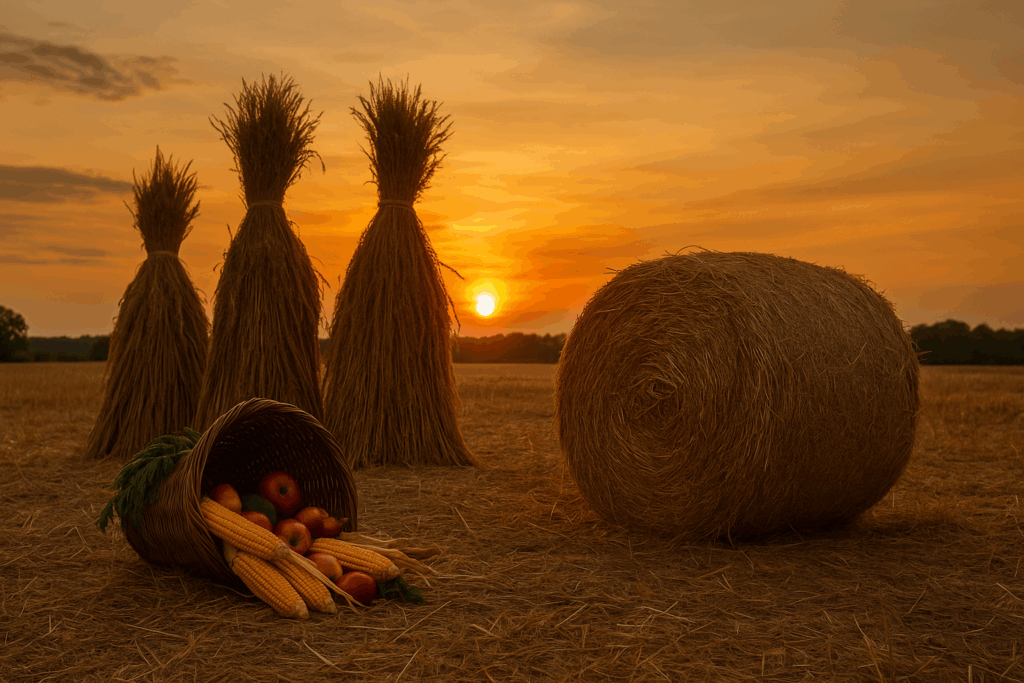🔥 October 14 – Embers of the Hearth Mother
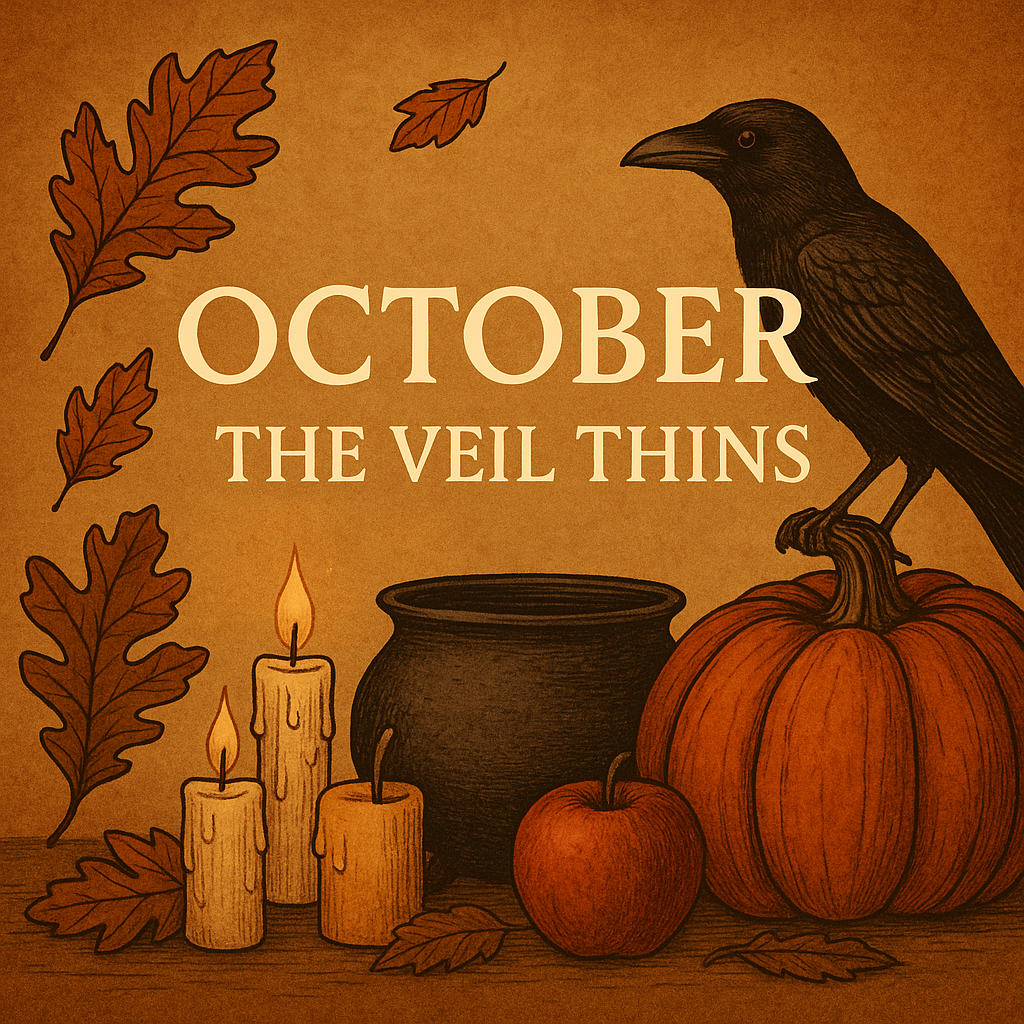
There is a certain kind of stillness that belongs only to the heart of October — when the wind rattles the windows and the scent of woodsmoke curls through the air. It is a time when the world outside begins to wither, but the world within — the world of hearth and home — begins to glow. The flicker of firelight, the scent of bread baking, the soft creak of floorboards underfoot: these are the ancient languages of comfort, of sanctuary, of magic woven in everyday things.
Tonight, we turn inward to honor the Hearth Mother — the spirit of warmth, protection, and sustenance who dwells in every flame that burns and every home that holds love. In old traditions, she had many names: Brigid in the Celtic lands, Hestia among the Greeks, Vesta to the Romans, Gabija to the Lithuanians. But beneath all names, she is the same essence — the keeper of sacred flame, the first fire that humanity ever tended.
To honor her is to honor the center of life itself.
The Flame as Heartbeat
Before there were houses, there were fires — circles of warmth around which our ancestors gathered. The hearth was not only practical; it was spiritual. It gave light in darkness, cooked food, protected against wild beasts and chill winds. Around it, stories were told, songs were sung, and prayers were whispered to the unseen.
The fire was life.
Even now, when most of our warmth comes from radiators or electric heat, the archetype remains. We gather around candles, ovens, or kitchen tables as our forebears gathered around the hearth. Something primal stirs in us at the sight of a flame — something that remembers that survival and magic are born from the same fire.
The Hearth Mother is that flame personified. She is the spirit who keeps the home’s pulse steady, who warms our bodies and our hearts. She is the whisper behind domestic rituals — cleaning, cooking, brewing tea — transforming them from chores into acts of sacred devotion.
The Home as Temple
In the modern world, it’s easy to forget that every home is a sacred space. The walls that protect us are not only physical but spiritual; they hold the echoes of laughter, sorrow, love, and daily life. The ancient people knew this well. They tended their homes as they would a temple. The threshold was guarded with iron or herbs to ward off ill spirits. Offerings of milk or honey were left by the hearth to please the household guardian — a brownie, domovoi, or kobold, depending on the land.
The hearth was an altar. Every spark, every ember was a living prayer.
To live magically is to rekindle this awareness. It is to treat the mundane as miraculous. When you sweep your floors, you clear stagnant energy as well as dust. When you cook, you blend intention with nourishment. When you light a candle, you invoke both comfort and protection.
You can honor the Hearth Mother by dedicating a small space in your home — perhaps the kitchen or wherever warmth gathers most naturally. A single candle, a bowl of salt, a loaf of bread cooling on a rack — these are offerings enough. Speak softly as you work:
“Lady of flame and fragrant bread,
Keeper of warmth where souls are fed,
Bless this home, both roof and stone,
That love may dwell, and peace be known.”
The Alchemy of Domestic Magic
Domestic magic is often overlooked because it is gentle. It does not shout or sparkle. It hums quietly through the ordinary. It is the transformation of raw matter — ingredients, intentions, emotions — into something sustaining.
When you knead dough, you are shaping abundance. When you stir a pot of soup, you are blending energies of health and love. When you light incense or sweep your floor, you are setting the energetic rhythm of your home. These small, consistent actions create protection stronger than any charm.
In the hearth’s glow, the spiritual and physical merge.
Try this simple act tonight: as you prepare a meal or pour yourself a warm drink, move slowly, deliberately. Imagine golden light flowing from your hands into whatever you touch. Whisper blessings into the food or tea. When you eat or drink, visualize that same light entering your body, warming you from within, strengthening your spirit.
This is hearth magic — simple, radiant, enduring.
Offerings of Warmth
The Hearth Mother thrives on offerings made with sincerity rather than extravagance. In ancient Rome, every home kept a flame dedicated to Vesta. The smallest crumb of bread or drop of wine offered to her was believed to bless the household with harmony. In Ireland, Brigid’s flame was kept alive through centuries — first by priestesses, later by nuns — as a symbol of continuity and protection.
Your offering might be as simple as lighting a candle each evening as twilight falls. Or you might bake bread and dedicate the first slice to the unseen spirit of your home. You might place a small bowl of milk near your stove or fireplace as a token of gratitude.
The gesture matters more than the form.
When you offer warmth, you invite warmth to remain. When you honor your home, you strengthen its spirit — and your own.
Fire and Renewal
October’s fire is not the wild blaze of midsummer; it is the ember — steady, glowing, patient. It does not consume, but transforms. In this, it mirrors the inner fire of the soul at this time of year. The Hearth Mother teaches that renewal is not always loud or grand. Sometimes it is the quiet tending of what remains — the keeping of the flame when the winds of change howl outside.
There is wisdom in this slowness. The ember teaches endurance. It reminds us that warmth can be sustained even in the deepest cold.
When you feel weary or disconnected, sit before your hearth, your candle, or even your stove’s gentle hum. Place your hands over your heart and breathe deeply. With each exhale, imagine the tension leaving your body like smoke. With each inhale, draw the ember’s warmth inward. Feel it pulse within you, soft but steady — your own sacred hearth.
You carry the Hearth Mother’s flame wherever you go.
The Spirit of Home
Every home, no matter how humble, has its own spirit — a presence formed by the energy of those who dwell within it. You may sense it as a feeling of peace when you enter, or the way light falls through the window at a certain hour. You can strengthen this spirit through care and kindness, through laughter and shared meals, through mindful living.
Some practitioners name their house spirit and speak to it as a friend. Others tend it silently, through ritual cleaning and blessing. Both ways are true. What matters is attention. The home spirit thrives on being seen and respected.
Try this: as you move through your home today, pause in each room and whisper a thank-you. Touch the walls, the doorframes, the windows. Acknowledge the space that shelters you. You may be surprised at the calm that follows — as if the house itself exhales in relief, grateful to be remembered.
Closing Blessing
As night falls and the wind rises outside, light a small flame. Let its glow flicker against the walls and fill the corners with golden breath. Whisper your gratitude for warmth, for food, for safety, for love — for all that sustains you through the darkening year.
May the Hearth Mother bless your home with peace and plenty.
May her fire burn quietly within your heart.
And when winter’s cold breath draws near, may your light never falter, for the embers of the hearth are eternal.
Remember: home is not only a place, but a spirit — one you tend with every gentle act of love.

